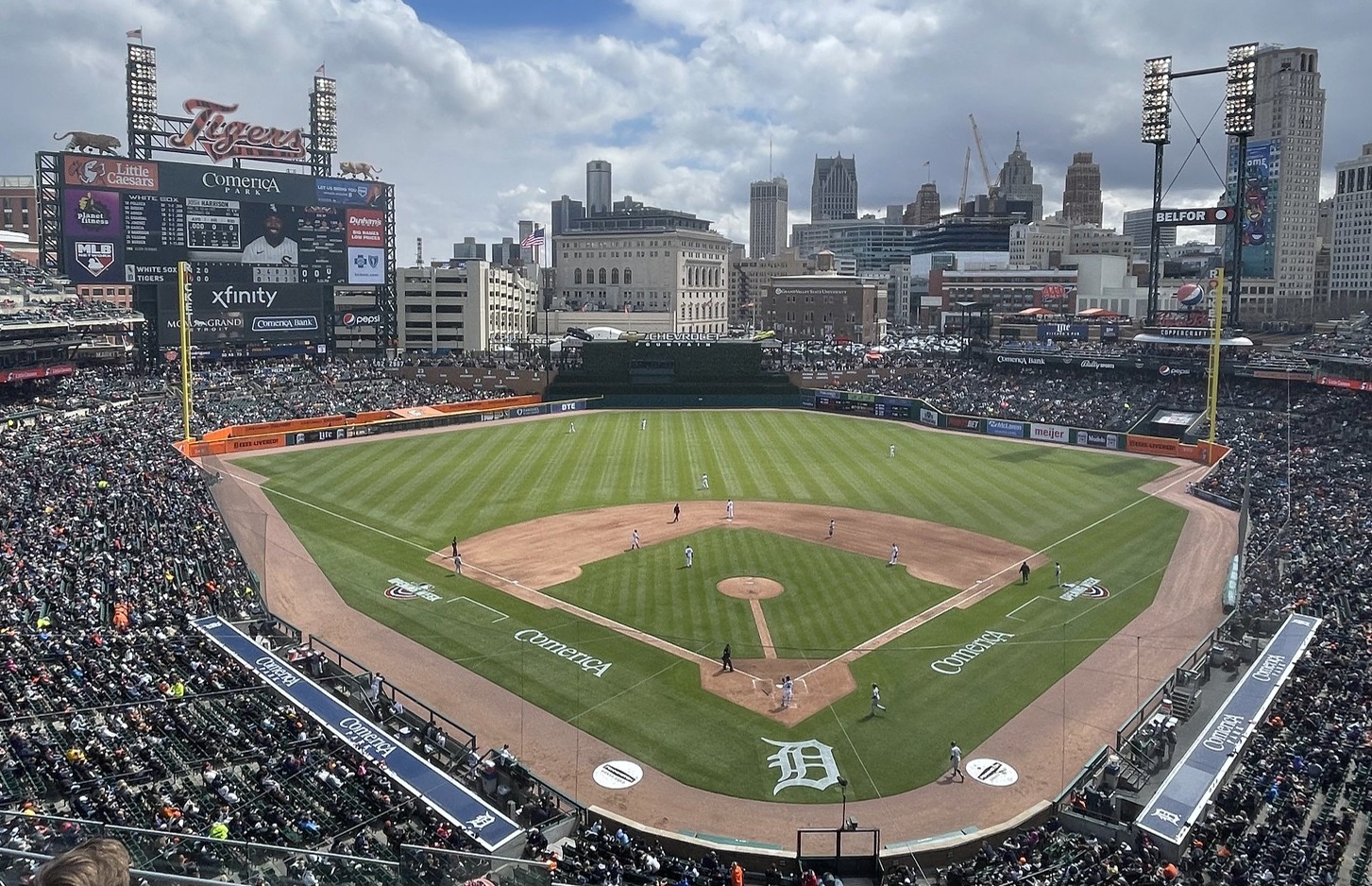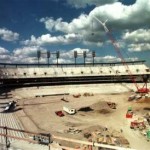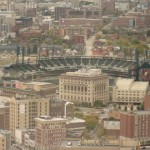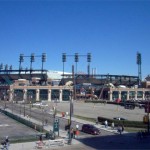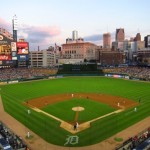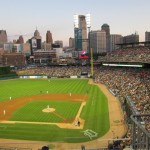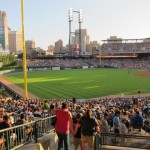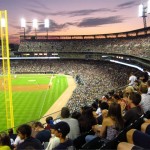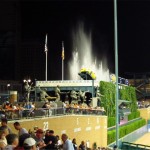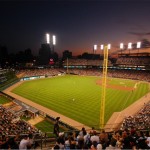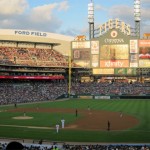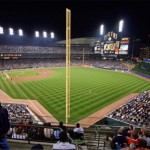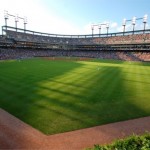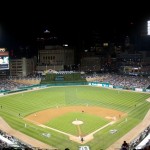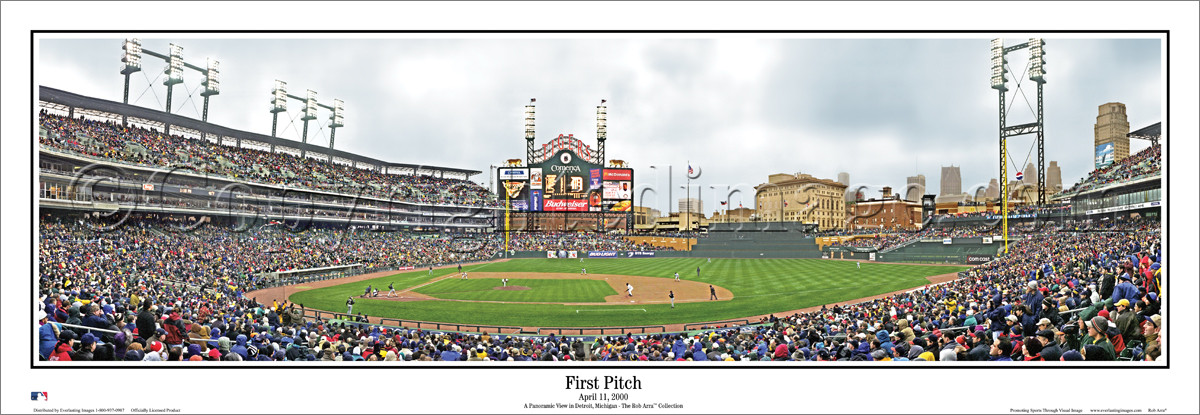Ask any Tigers fan what symbolizes their team, and many will respond with either the Old English D or Tiger Stadium, both of which have been integral to the identity and history of the Detroit Tigers. The Old English D, first appearing on Tigers caps and uniforms in the early 1900s, has become one of the most iconic logos in baseball. Tiger Stadium, the team’s home from 1912 to 1999, was a beloved and historic ballpark. It had unique features, including its intimate atmosphere and old-school charm, but it ultimately lacked many modern amenities, leading ownership to seek a new venue.
The quest for a new ballpark began in the 1980s, as the Tigers recognized that Tiger Stadium was no longer sufficient for a major league franchise in the modern era. By 1988, several potential locations were identified for a new ballpark, including sites west of Fox Theater, northeast of downtown Detroit, and north of Tiger Stadium in the Briggs community. The Tigers initially favored the site near Tiger Stadium, but when Detroit’s theater district began its revitalization, the focus shifted toward a more downtown-centered venue. In 1987, the Tiger Stadium Fan Club was formed to push for the renovation of the historic ballpark. Plans to renovate Tiger Stadium, however, were complicated by the need to acquire 10 acres of land, close the stadium for two years, and invest in costly upgrades. Meanwhile, in 1992, Detroit entrepreneur Mike Ilitch purchased the Tigers and committed to building a new stadium as part of a broader initiative to revitalize downtown Detroit. However, a major hurdle arose when an ordinance was passed in 1992 banning public financing for new stadiums. Despite this, Ilitch and the Tigers were undeterred. In 1995, the city of Detroit agreed to contribute public funding for the new stadium, and in March 1996, voters approved the construction of what would become Comerica Park.
| MEMORABLE MOMENTS AT COMERICA PARK |
|
After several years of planning and construction, Comerica Park officially opened on April 11, 2000, for its Opening Day game against the Seattle Mariners. The new stadium marked a significant departure from Tiger Stadium, offering modern amenities while incorporating elements that connected it to the team’s storied past. Almost 41,000 fans filled the ballpark on its opening day, and Comerica Park immediately became a beloved fixture in the city.
Situated in the heart of downtown Detroit, Comerica Park is surrounded by other prominent buildings such as Ford Field (home of the Detroit Lions) and the Fox Theater. As fans approach the ballpark, they are greeted by its distinctive brick exterior, massive light towers, and the enormous tiger sculptures that stand guard at the entrances. Upon entering, fans descend to the main concourse, where the field is 25 feet below street level, creating a unique and inviting atmosphere that makes Comerica Park feel intimate and connected to the city.
Comerica Park was designed to offer unobstructed views from nearly every seat, unlike Tiger Stadium, which had many seats with obstructed views due to the angle of the grandstand. The ballpark consists of three levels, and the grandstand extends from behind home plate to both the left and right field foul poles. The upper deck is split along the first-base side, providing fans with an excellent view of the game. The main concourse of Comerica Park is open, allowing fans to walk around the stadium without losing sight of the action on the field. One of the ballpark’s most striking features is the fountain located in straightaway centerfield. When a Tiger hits a home run, the fountains erupt in a display of liquid fireworks, adding to the excitement of the game. Along the left-center field wall, visitors can find six statues of Tiger Hall of Famers. These statues honor some of the team’s greatest legends, including Ty Cobb, Al Kaline, and Hank Greenberg. In addition, the main HD video scoreboard sits behind a section of seats in left field, providing fans with replays, highlights, and other visual entertainment during the game. For those looking for a little extra fun, Comerica Park also offers a range of attractions. Fans can enjoy a Ferris wheel, a merry-go-round, or simply stroll around the stadium to check out the various views from different sections of the park. The ballpark was designed to be more than just a place to watch baseball; it’s a destination that offers a variety of experiences for all types of fans.
Since its opening, Comerica Park has undergone a few changes to enhance the fan experience. In 2004, the bullpens, which were originally located in right field, were moved to behind the left field fence, and the area in right field was replaced with 950 additional seats. These changes were made to improve sightlines and create a more intimate atmosphere in the ballpark. In 2024, Comerica Park will unveil one of the largest video boards in baseball. The new videoboard, which will replace the existing one in left field, will span more than 15,000 square feet—providing fans with an even more spectacular viewing experience.
Comerica Park is part of the wave of retro-style ballparks that were built in the 1990s and 2000s. Like many of its contemporaries, Comerica Park incorporates modern amenities while evoking the charm of classic ballparks from the early 20th century. It’s a stadium that honors the team’s rich history, from the legendary players memorialized in statues to the traditions that continue to make Tigers baseball so special. With its fantastic location in downtown Detroit, the stunning views of the Detroit skyline, and its mix of old-school charm and modern features, Comerica Park remains one of the premier ballparks in Major League Baseball. For Tigers fans, it’s more than just a stadium—it’s a home, a place where memories are made, and a testament to the enduring legacy of the Detroit Tigers.

